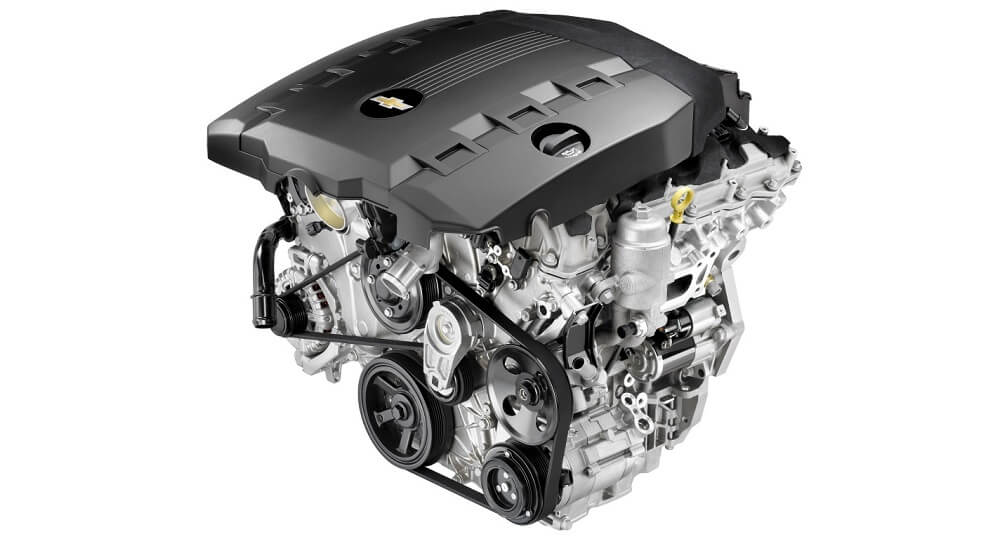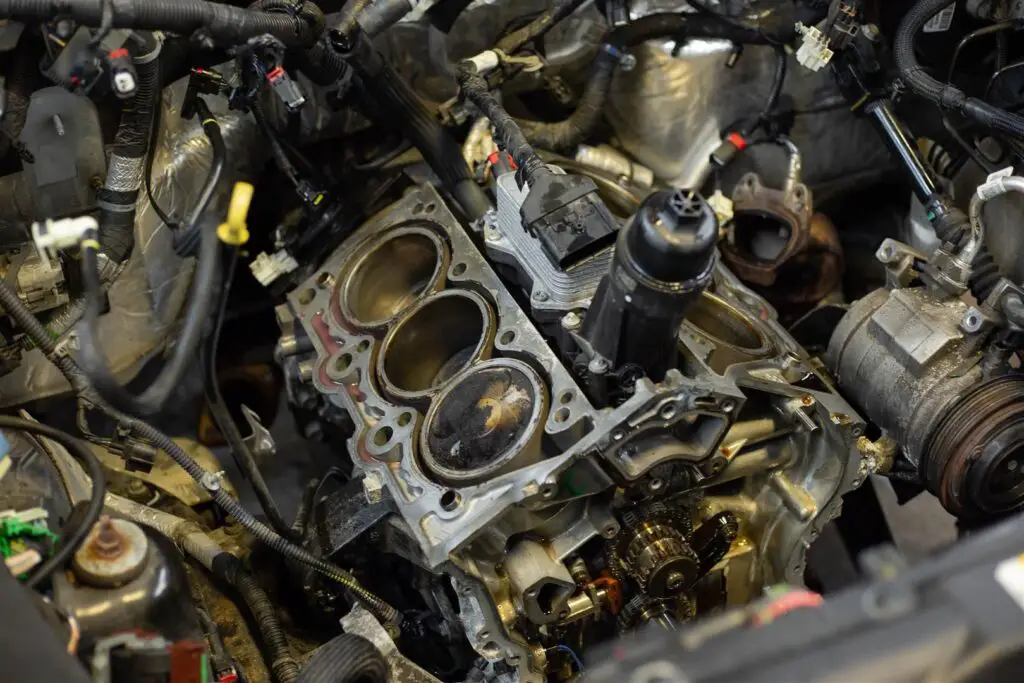Dodge 3.6 VVT engine problems commonly include timing chain tensioner failure, excessive oil consumption, and cylinder head issues. Regular maintenance, including timely oil changes and part replacements, can help mitigate these issues and extend the engine’s lifespan.
The Dodge 3.6 VVT engine, known as the Pentastar V6, has been a mainstay in Chrysler, Dodge, Jeep, and Ram vehicles since its introduction in 2010. Offering a blend of power and efficiency, the 3.6L VVT (Variable Valve Timing) engine has powered millions of vehicles. However, like all engines, the 3.6 VVT has faced its share of issues over the years.
While the engine is generally known for its reliability and performance, many owners and mechanics have reported recurring problems with specific components, including the timing chain, oil consumption, water pump, and cylinder heads. This article will dive deep into the most common issues associated with the Dodge 3.6 VVT engine, their causes, symptoms, solutions, and maintenance tips to ensure your engine runs smoothly for years to come.

Contents
- 1 What is the Dodge 3.6 VVT Engine?
- 2 Common Problems with the Dodge 3.6 VVT Engine
- 3 Preventive Maintenance Tips
- 4 Frequently Asked Questions
- 5 Conclusion
What is the Dodge 3.6 VVT Engine?
The Dodge 3.6L VVT engine, often referred to as the Pentastar V6, is a 60-degree V6 engine designed by Chrysler. It features an aluminum alloy block and a DOHC (Dual Overhead Cam) design with 24 valves. One of the engine’s most notable features is its Variable Valve Timing (VVT), which optimizes engine performance by adjusting the timing of the intake and exhaust valves for better fuel efficiency, increased power, and reduced emissions.
The 3.6L VVT engine has been used across a wide range of Chrysler, Dodge, Jeep, and Ram vehicles, including the Dodge Charger, Chrysler 300, Jeep Grand Cherokee, and Ram 1500, to name a few. Despite its performance capabilities, the engine has had several recurring problems that require attention.
Common Problems with the Dodge 3.6 VVT Engine
The Dodge 3.6 VVT engine, while known for its reliability, does experience several recurring issues that owners should be aware of. Understanding these common problems can help in early detection and proper maintenance to keep the engine running smoothly.
1. Timing Chain Tensioner Failure
One of the most common issues with the 3.6 VVT engine is the failure of the timing chain tensioner. The timing chain plays a crucial role in synchronizing the crankshaft and camshaft, ensuring the valves open and close at the proper times. The tensioner is responsible for maintaining the correct tension on the timing chain.
Symptoms:
- A rattling or ticking noise coming from the front of the engine, especially during startup.
- The Check Engine Light (CEL) coming on, often indicating trouble codes related to timing.
- Engine misfires or rough idling.
Causes:
- Premature wear of the tensioner, a known issue in early model years (2011-2013).
- Insufficient lubrication leading to increased friction and wear on the tensioner.
- Low-quality oil or infrequent oil changes.
Solutions:
- Regular oil changes using the recommended oil type and grade.
- Replacing the faulty timing chain tensioner when you hear any unusual sounds from the engine.
- Ensure that the engine is maintained in accordance with the manufacturer’s service schedule to avoid tensioner failure.
2. Excessive Oil Consumption
Another frequently reported issue with the 3.6 VVT engine is excessive oil consumption. Some owners of vehicles equipped with this engine report having to add oil between regular oil changes, often due to engine components such as piston rings, valve seals, or the PCV (Positive Crankcase Ventilation) valve malfunctioning.
Symptoms:
- Frequent need for oil top-ups between oil changes.
- Blue smoke from the exhaust, indicating burning oil.
- Engine knocking or ticking sounds due to insufficient lubrication.
Causes:
- Worn piston rings that allow oil to enter the combustion chamber and burn with fuel.
- A faulty PCV valve, which allows excessive amounts of oil to pass into the intake manifold.
- Deteriorated valve seals allowing oil to seep into the combustion chamber.
Solutions:
- Regular oil checks and topping up when necessary.
- Replacing worn piston rings or damaged valve seals.
- Inspecting and replacing the PCV valve if it is clogged or malfunctioning.
3. Cylinder Head Issues
Certain model years, particularly 2011-2013, have experienced issues with the cylinder heads, leading to problems such as valve seat failure. This issue is often tied to overheating and poor manufacturing tolerances in earlier models.
Symptoms:
- Engine misfires, especially when accelerating or idling.
- Rough idling or stalls.
- Loss of power or acceleration.
Causes:
- Overheating can cause the valve seats to degrade over time.
- Manufacturing defects in the cylinder heads during the early production years.
Solutions:
- Regularly check the engine’s cooling system to prevent overheating.
- Replace the cylinder heads or valve seats if damaged.
- If you own an affected model, consider upgrading to revised cylinder heads in later models.
4. Water Pump Failure
The water pump in the Dodge 3.6 VVT engine is essential for maintaining proper engine temperature by circulating coolant through the engine. A faulty water pump can cause the engine to overheat, leading to severe engine damage if left unchecked.
Symptoms:
- Engine overheating, even after replacing the thermostat.
- Coolant leaks under the vehicle.
- Unusual noises from the front of the engine.
Causes:
- Internal seal failure in the water pump.
- Corrosion over time due to prolonged use.
- Contaminants in the cooling system leading to pump failure.
Solutions:
- Regularly inspect the cooling system for leaks or wear.
- Replace the water pump at the first sign of failure.
- Flush the cooling system periodically to remove contaminants and prevent damage.
5. Rocker Arm and Lifter Noise
Some owners have reported a ticking or tapping noise from the engine, often attributed to issues with the rocker arms or lifters. This is typically a sign of insufficient lubrication or wear on these components.
Symptoms:
- Ticking or tapping noise coming from the engine, especially at idle.
- Check Engine Light illumination.
- Loss of engine performance or rough idling.
Causes:
- Insufficient lubrication leading to wear on the rocker arms or lifters.
- Low-quality oil used in the engine.
- Extended oil change intervals that lead to sludge buildup.
Solutions:
- Regular oil changes using the recommended oil grade and quality.
- Replacing worn rocker arms or lifters.
- Proper lubrication is essential for preventing wear and tear on critical engine components.

Preventive Maintenance Tips
To avoid these common issues, it is crucial to follow a regular maintenance schedule. Here are a few tips for keeping your Dodge 3.6 VVT engine running smoothly:
- Regular Oil Changes: Stick to the manufacturer’s recommended oil change intervals and always use the correct oil grade and type.
- Cooling System Checks: Regularly inspect your vehicle’s radiator, hoses, and water pump to ensure the cooling system is functioning properly.
- Component Inspections: Periodically check for worn components such as the timing chain, rocker arms, and valve seals.
- Early Diagnostics: If you hear unusual noises or notice a drop in performance, have your engine inspected by a certified mechanic.
Frequently Asked Questions
Here are some FAQs about the dodge 3.6 vvt engine problems –
1. What is the lifespan of the Dodge 3.6 VVT engine?
With proper maintenance, the Dodge 3.6 VVT engine can last between 150,000 to 200,000 miles or more.
2. Are timing chain issues common in all 3.6 VVT engines?
No, timing chain issues are more prevalent in certain model years, particularly 2011–2013.
3. How can I prevent excessive oil consumption?
Regularly monitor oil levels, use high-quality engine oil, and replace worn components like piston rings or valve seals.
4. Is cylinder head replacement expensive?
Yes, replacing cylinder heads can be costly due to labor and parts, but early detection can prevent more expensive repairs.
5. Can I drive with a failing water pump?
It’s not recommended. Driving with a failing water pump can lead to engine overheating and potential damage.
Conclusion
The Dodge 3.6 VVT engine, while generally reliable, has faced several common issues that can affect its performance and longevity. Being proactive with maintenance and addressing problems promptly can ensure the engine’s longevity and performance.
By staying informed and conducting routine checks, you can ensure that your 3.6 VVT engine continues to run smoothly for years.